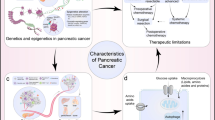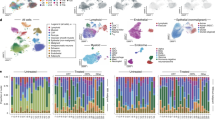Abstract
By integrating gene profiling and immunohistochemical data with functional experiments in cell lines in this study we show for the first time that doublecortin (DCX) domain containing 2 (DCDC2), a protein belonging to the DCX family and involved in neuronal cell migration, is aberrantly expressed in prostate tumors whereas absent in normal prostate. Furthermore, in patients treated with radical prostatectomy, high levels of DCDC2 RNA were significantly associated with increased biochemical relapse (LogRank Mantel-Cox=0.012). Mechanistically, we found that the ETS transcription factor ESE3/EHF, which is expressed in normal prostate and frequently lost in prostate tumors, maintained DCDC2 repressed by binding to a novel identified ETS binding site in the gene promoter. Consistently, in prostate tumors and in cellular models of gain and loss of ESE3/EHF, the expression of DCDC2 and ESE3/EHF were inversely correlated. In prostate cancer cells, DCDC2 colocalized with microtubules and promoted cell migration and resistance to the microtubule-targeting drug taxol. Collectively, this study establishes DCDC2 as a novel ESE3/EHF oncogenic target in prostate cancer. These findings may be relevant for the clinical management of prostate cancer as DCDC2 may signal tumors more prone to relapse and resistant to taxol treatment.
This is a preview of subscription content, access via your institution
Access options
Subscribe to this journal
Receive 50 print issues and online access
$259.00 per year
only $5.18 per issue
Buy this article
- Purchase on Springer Link
- Instant access to full article PDF
Prices may be subject to local taxes which are calculated during checkout






Similar content being viewed by others
Accession codes
References
DeMarzo AM, DeMarzo AM, Nelson WG, Isaacs WB, Epstein JI . Pathological and molecular aspects of prostate cancer. Lancet 2003; 361: 955–964.
Seth A, Watson DK . ETS transcription factors and their emerging roles in human cancer. Eur J Cancer 2005; 41: 2462–2478.
Tomlins SA, Rhodes DR, Perner S, Dhanasekaran SM, Mehra R, Sun X et al. Recurrent fusion of TMPRSS2 and ETS transcription factor genes in prostate cancer. Science 2005; 310: 644–648.
Kumar-Sinha C, Tomlins SA, Chinnaiyan AM . Recurrent gene fusions in prostate cancer. Nat Rev Cancer 2008; 8: 497–511.
Klezovitch O, Risk M, Coleman I, Lucas JM, Null M, True LD et al. A causal role for ERG in neoplastic transformation of prostate epithelium. Proc Natl Acad Sci USA 2008; 105: 2105–2110.
Tomlins SA, Laxman B, Varambally S, Cao X, Yu J, Helgeson BE et al. Role of the TMPRSS2-ERG gene fusion in prostate cancer. Neoplasia 2008; 10: 177–188.
Carver BS, Tran J, Gopalan A, Chen Z, Shaikh S, Carracedo A et al. Aberrant ERG expression cooperates with loss of PTEN to promote cancer progression in the prostate. Nat Genet 2009; 41: 619–624.
King JC, Xu J, Wongvipat J, Hieronymus H, Carver BS, Leung DH et al. Cooperativity of TMPRSS2-ERG with PI3-kinase pathway activation in prostate oncogenesis. Nat Genet 2009; 41: 524–526.
Zong Y, Xin L, Goldstein AS, Lawson DA, Teitell MA, Witte ON . ETS family transcription factors collaborate with alternative signaling pathways to induce carcinoma from adult murine prostate cells. Proc Natl Acad Sci USA 2009; 106: 12465–12470.
Cangemi R, Mensah A, Albertini V, Jain A, Mello-Grand M, Chiorino G et al. Reduced expression and tumor suppressor function of the ETS transcription factor ESE-3 in prostate cancer. Oncogene 2008; 27: 2877–2885.
Reiner O, Coquelle FM, Peter B, Levy T, Kaplan A, Sapir T et al. The evolving doublecortin (DCX) superfamily. BMC Genomics 2006; 7: 188.
Kim MH, Cierpicki T, Derewenda U, Krowarsch D, Feng Y, Devedjiev Y et al. The DCX-domain tandems of doublecortin and doublecortin-like kinase. Nat Struct Biol 2003; 10: 324–333.
Meng HY, Smith SD, Hager K, Held M, Liu J, Olson RK et al. DCDC2 is associated with reading disability and modulates neuronal development in the brain. Proc Natl Acad Sci USA 2005; 102: 17053–17058.
Koizumi H, Higginbotham H, Poon T, Tanaka T, Brinkman BC, Gleeson JG et al. Doublecortin maintains bipolar shape and nuclear translocation during migration in the adult forebrain. Nat Neurosci 2006; 9: 779–786.
Gleeson JG, Lin PT, Flanagan LA, Walsh CA . Doublecortin is a microtubule-associated protein and is expressed widely by migrating neurons. Neuron 1999; 23: 257–271.
Burbridge TJ, Wang Y, Volz AJ, Peschansky VJ, Lisann L, Galaburda AM et al. Postnatal analysis of the effect of embryonic knockdown and overexpression of candidate dyslexia susceptibility gene homolog Dcdc2 in the rat. Neuroscience 2008; 152: 723–733.
Coquelle FM, Levy T, Bergmann S, Wolf SG, Bar-El D, Sapir T et al. Common and divergent roles for members of the mouse DCX superfamily. Cell Cycle 2006; 5: 976–983.
Horesh D, Sapir T, Francis F, Wolf SG, Caspi M, Elbaum M et al. Doublecortin, a stabilizer of microtubules. Hum Mol Genet 1999; 8: 1599–1610.
Kunderfranco P, Mello-Grand M, Cangemi R, Pellini S, Mensah A, Albertini V et al. ETS transcription factors control transcription of EZH2 and epigenetic silencing of the tumor suppressor gene Nkx3.1 in prostate cancer. PLoS One 2010; 5: e10547.
Tint I, Jean D, Baas PW, Black MM . Doublecortin associates with microtubules preferentially in regions of the axon displaying actin-rich protrusive structures. J Neurosci 2009; 29: 10995–11010.
Dijkmans TF, van Hooijdonk LW, Fitzsimons CP, Vreugdenhil E . The doublecortin gene family and disorders of neuronal structure. Cent Nerv Syst Agents Med Chem 2010; 10: 32–46.
Rouzier R, Rajan R, Wagner P, Hess KR, Gold DL, Stec J et al. Microtubule-associated protein tau: a marker of paclitaxel sensitivity in breast cancer. Proc Natl Acad Sci USA 2005; 102: 8315–8320.
Dumontet C, Jordan MA . Microtubule-binding agents: a dynamic field of cancer therapeutics. Nat Rev Drug Discov 2010; 9: 790–803.
Mollinedo F, Gajate C . Microtubules, microtubule-interfering agents and apoptosis. Apoptosis 2003; 8: 413–450.
Wagner P, Wang B, Clark E, Lee H, Rouzier R, Pusztai L . Microtubule Associated Protein (MAP)-Tau: a novel mediator of paclitaxel sensitivity in vitro and in vivo. Cell Cycle 2005; 4: 1149–1152.
Soltani MH, Pichardo R, Song Z, Sangha N, Camacho F, Satyamoorthy K et al. Microtubule-associated protein 2, a marker of neuronal differentiation, induces mitotic defects, inhibits growth of melanoma cells, and predicts metastatic potential of cutaneous melanoma. Am J Pathol 2005; 166: 1841–1850.
Dobyns WB, Truwit CL, Ross ME, Matsumoto N, Pilz DT, Ledbetter DH et al. Differences in the gyral pattern distinguish chromosome 17-linked and X-linked lissencephaly. Neurology 1999; 53: 270–277.
Oltra S, Martinez F, Orellana C, Grau E, Fernandez JM, Cañete A et al. The doublecortin gene, a new molecular marker to detect minimal residual disease in neuroblastoma. Diagn Mol Pathol 2005; 14: 53–57.
Viprey VF, Lastowska MA, Corrias MV, Swerts K, Jackson MS, Burchill SA . Minimal disease monitoring by QRT-PCR: guidelines for identification and systematic validation of molecular markers prior to evaluation in prospective clinical trials. J Pathol 2008; 216: 245–252.
Daou MC, Smith TW, Litofsky NS, Hsieh CC, Ross AH . Doublecortin is preferentially expressed in invasive human brain tumors. Acta Neuropathol 2005; 110: 472–480.
Sapir T, Horesh D, Caspi M, Atlas R, Burgess HA, Wolf SG et al. Doublecortin mutations cluster in evolutionarily conserved functional domains. Hum Mol Genet 2000; 9: 703–712.
Bowen C, Bubendorf L, Voeller HJ, Slack R, Willi N, Sauter G et al. Loss of NKX3.1 expression in human prostate cancers correlates with tumor progression. Cancer Res 2000; 60: 6111–6115.
Massinen S, Hokkanen ME, Matsson H, Tammimies K, Tapia-Páez I, Dahlström-Heuser V et al. Increased expression of the dyslexia candidate gene DCDC2 affects length and signaling of primary cilia in neurons. PLoS One 6: e20580.
Albertini V, Jain A, Vignati S, Napoli S, Rinaldi A, Kwee I et al. Novel GC-rich DNA-binding compound produced by a genetically engineered mutant of the mithramycin producer Streptomyces argillaceus exhibits improved transcriptional repressor activity: implications for cancer therapy. Nucleic Acids Res 2006; 34: 1721–1734.
Meng H, Powers NR, Tang L, Cope NA, Zhang PX, Fuleihan R et al. A dyslexia-associated variant in DCDC2 changes gene expression. Behav Genet 2011; 41: 58–66.
Acknowledgements
This work was supported by grants from Oncosuisse (KFS-01913-08 and KFS-02573-02-2010), Swiss National Science Foundation (FNS-31003A-118113) and Ticino Foundation for Cancer Research to GMC. MMG and GC were supported by Compagnia di San Paolo, Torino, Italy.
Author information
Authors and Affiliations
Corresponding author
Ethics declarations
Competing interests
The authors declare no conflict of interest.
Additional information
Supplementary Information accompanies the paper on the Oncogene website
Rights and permissions
About this article
Cite this article
Longoni, N., Kunderfranco, P., Pellini, S. et al. Aberrant expression of the neuronal-specific protein DCDC2 promotes malignant phenotypes and is associated with prostate cancer progression. Oncogene 32, 2315–2324 (2013). https://doi.org/10.1038/onc.2012.245
Received:
Revised:
Accepted:
Published:
Issue Date:
DOI: https://doi.org/10.1038/onc.2012.245
Keywords
This article is cited by
-
Spindle function and Wnt pathway inhibition by PBX1 to suppress tumor progression via downregulating DCDC2 in colorectal cancer
Oncogenesis (2023)
-
A harmonized resource of integrated prostate cancer clinical, -omic, and signature features
Scientific Data (2023)
-
CNK2 promotes cancer cell motility by mediating ARF6 activation downstream of AXL signalling
Nature Communications (2023)
-
MECOM permits pancreatic acinar cell dedifferentiation avoiding cell death under stress conditions
Cell Death & Differentiation (2021)
-
Loss of EHF facilitates the development of treatment-induced neuroendocrine prostate cancer
Cell Death & Disease (2021)



